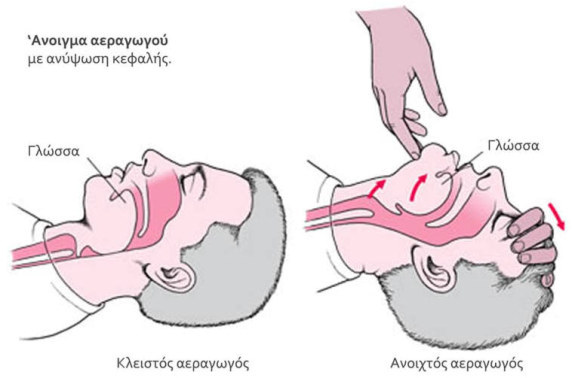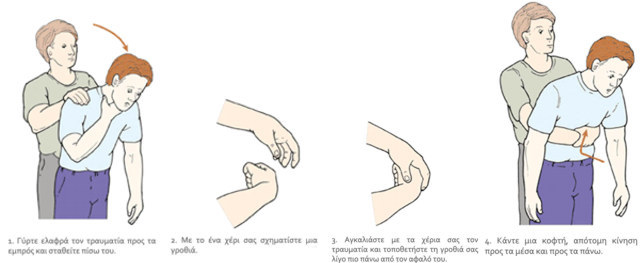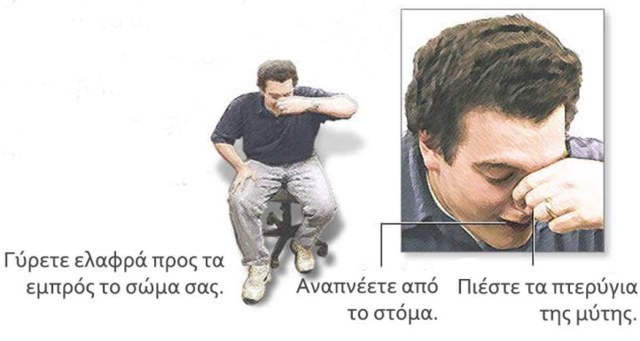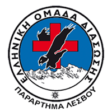Myth: Her tongue turned and he put his hand in her mouth to pull it out!
Fact: The tongue DOES not turn. When someone loses his senses or becomes unconscious, then, as do all the muscles of the body, the tongue relaxes and due to gravity, falls backwards and blocks the air passage. Putting one of our hands on the wounded’s forehead (as if checking to see if he has a fever) and the other under his chin, lift his head slightly. This movement is enough to return the tongue to its original position and enable ventilation!

Myth: When you get a sunburn or a burn from some hot object (eg. the burner of a stove), you should put toothpaste, yogurt, tomatoes and various other alternatives on the wound
Fact: The only thing you need to do is to pour plenty of running water or saline solution (for at least 10 minutes) on the surface with the burn. This will lower the temperature of the area, reducing the burn and relieving the pain. If you want, you can use a special ointment for burns. Then cover with a sterile gauze to prevent further infection. All the rest will simply worsen the wound and possibly infect it. If the area of the burn is great in size or degree, then you must visit your nearest health facility immediately.

Myth: While he was eating, he choked on his food and began to cough. I reacted immediately by putting my fingers into his mouth and extracting what he was choking on!
Fact: This is the worst reaction you could have. Apart from the fact that you could get injured, you are most likely to push down the piece of food that has clogged the airway of the injured person and thus stop his – at least partial – oxygenation.
The correct reaction is, as long as the injured person is coughing, to let him cough freely. Coughing is a sign that he can cope on his own. Don’t hit him in the back. Don’t give him water to drink. Only if he stops coughing, should you intervene, because it means that he has stopped (or will shortly stop) breathing and will therefore collapse. This method of treatment is shown above:

Myth: Two days ago, while I was cutting meat in the kitchen, I cut myself deep with the knife. However, I poured plenty of betadine on the open wound and so it did not get infected.
Fact: Betadine is a local antiseptic that should be used by healthcare professionals and not by ordinary citizens. In addition to the fact that it can cause burns in large quantities and open wounds, some people are allergic to certain components of the antiseptic and may therefore experience an allergic shock during use. Its use on people outside your immediate family circle should be avoided.
Proper treatment of minor bleeding involves washing the wound (as long as it is not particularly deep) with plenty of clean water or saline spray (a saltwater solution) and applying pressure using a gauze. If the gauze is impregnated with blood, then you shouldnot remove it in order to put a new one in its place, but place the new gauzes on top of the old ones. If the bleeding is heavy and if the light pressure does not work within the next ten minutes, then the injured person must visit the nearest health unit immediately.

Myth: When your nose is bleeding, put a cotton ball in the nostril which is bleeding and tilt your head back
Fact: Nose bleeds are a relatively simple form of bleeding, as long as it is not caused by pathological causes. The treatment is simple and the bleeding usually subsides very quickly. Lean your body slightly forward, letting the blood flow freely, while one hand pinches the nose just below the spot where our eyeglasses rest; that is, not the hard cartilage, but the next soft spot, without, of course, closing the nostrils.

Myth: Ice must not be used on the head, but it can be used elsewhere, even to stop bleeding
Fact: Ice use is not prohibited on the head, as long as it concerns a minor blow and there is no open wound. In general, ice is used to prevent and/or reduce swelling. However, never use it directly on a wound, but always wrapped in a cloth or towel to avoid causing a burn. Never use it on a bleed because it also causes burns. Place it for 15-20 minutes, approximately every 2-4 hours. Ice packs, which do not require a refrigerator, are commercially available and can be kept in the first-aid kit of your car.
First Aid is the sum of the actions taken to help to maintain, if not improve the condition of the injured individual. IT IS NOT A CURE! IT IS NOT A MEDICAL ACT! Every first aid provision must be followed by medical care.
